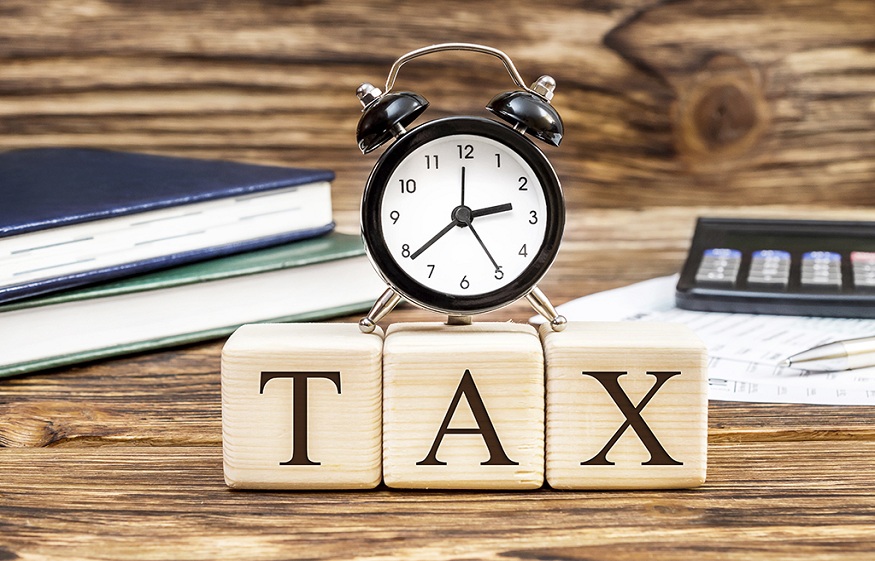Almost every US-based product seller has a January deadline for reporting sales tax. A few sellers will need to submit their sales tax return frequently, and therefore all of their paperwork is already in order. But many people only have to file their sales tax return once a year. For these sellers, January (and its sales tax filing deadlines) can turn into a pretty unpleasant time, especially after a very profitable and fun-filled holiday season.
But fear not, the process of filing your sales tax can be broken down into five manageable steps. Start here and in no time your sales tax return will be tax compliant.
Forty-five states and the District of Columbia require merchants to collect sales tax from their customers.
Doing business temporarily offline in a state , like you would at a trade show, for example.
If you think you may have a physical presence in a state , you can check that with that state ‘s tax authority to determine whether or not you have a sales tax nexus (or nexus).
Click on this map for more information on the collection of sales tax in each specific state:
The first step to having a tax-compliant sales tax return is to always determine where you have a sales tax nexus and configure the necessary settings on your online store (or whatever channel you use to sell) to collect this sales tax.
Once you have determined where you have a nexus, your next step is:
Register to Obtain a Permit to Collect Sales Tax
States where a nexus has been established require you to obtain a permit before you begin to collect sales tax. To register for your license, you must go to the State Department of Revenue website , or call the Help Desk.
States use money from sales taxes collected by vendors to finance and pay various costs for several projects, such as schools, roads and public safety. Therefore, they place a lot of emphasis on all sellers who have a nexus with their state collecting and remitting sales tax to them.
Some sales tax permits are free, while others only cost small amounts.
Once you register, your state agencies will let you know when and how often you need to pay. Generally, the frequency is monthly, quarterly or annually. Most filing deadlines are in January, which is why all e-commerce sellers will be very busy filing and paying their sales tax during that month.
If you are a “multi-channel seller”, keep in mind that you must collect sales tax from buyers with in States where you have a sales tax nexus across every channel you use to sell. Again, this step is relatively easy if you only have a sales tax nexus in a single State . If you have a sales tax nexus in multiple States , check this with the platform you’re selling on to make sure you’re automatically collecting sales tax from the right buyers.
Calculate the Amount of Sales Tax You Collected
As the sales tax filing deadline approaches, you will now need to calculate how much sales tax you have collected from buyers in each State where you have a nexus.
If you only sell on Shopify and are on the Professional or Unlimited plan, you can easily do this by creating a sales tax report in your Reports tab. But if you’re selling across multiple sales channels or accepting payments through multiple platforms, it gets more and more complicated. Software like Tax Jar can do this for you, but if you choose to do it yourself, you’ll need to create a report that describes how much sales tax you’ve collected from buyers in each state and channel . on which you are selling.
For a few States , this is relatively simple — they just want to know how much sales tax you’ve collected from all buyers in a State . But for many others States , the thing gets complicated. They don’t just want to know the total amount of sales tax you’ve collected from buyers in their state , but they also want you to specify the quantity by country, city or other special district. This means that you will need to analyze your sales to determine where your buyers reside. This is where sales tax accounting can quickly turn into a nightmare.
Once you have calculated the amount of sales tax you have collected, your next step will be…
Submit Your Sales Tax Return
Now it’s time to declare the sales taxes you’ve collected from your buyers, and to do so for each State in which you have a nexus.
For most of States , the declaration is made very easily online. In fact, a few States even require you to declare online, or pay a penalty. Check this with your State to know when and how you must report.
Don’t think you’re irrelevant if you haven’t collected sales tax in a given tax period. Most of States require you to file a “nil return” even if you did not collect sales tax. A “nil return” is a tax return that simply tells the state that you did not collect sales tax during the tax period in question. They want you to show up, and it lets them know your business is still in business. If you forget to submit your nil declaration, you may receive a penalty, which is also the case if you forget to declare and pay.

